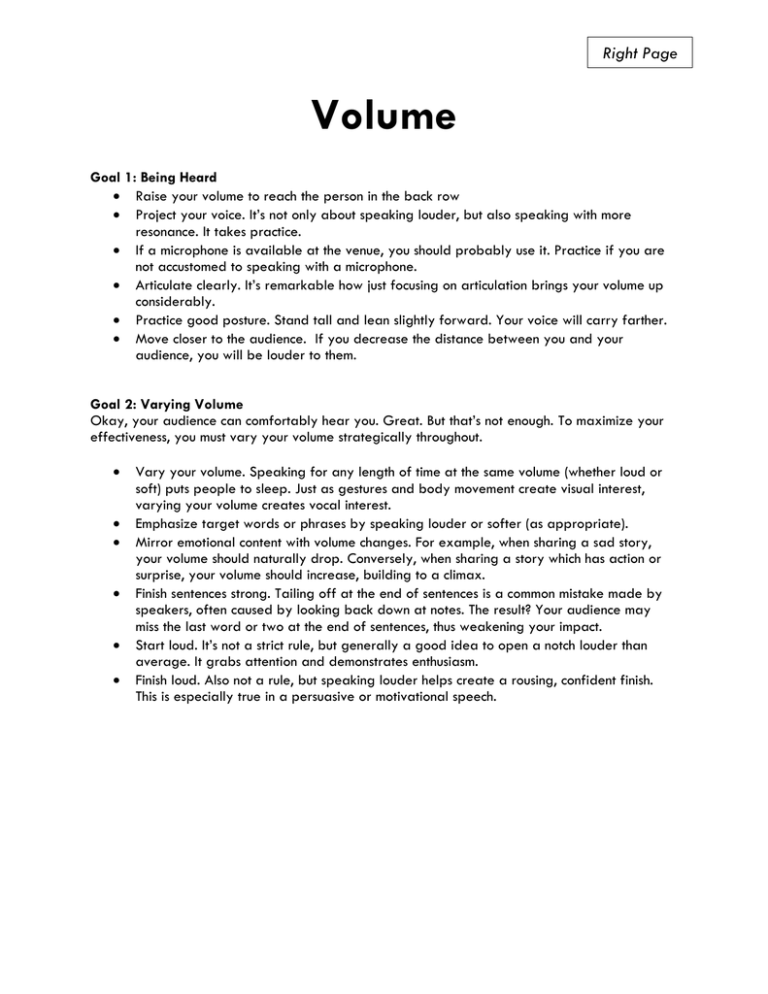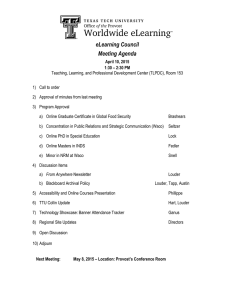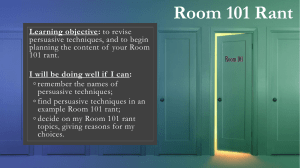Volume Right Page
advertisement

Right Page Volume Goal 1: Being Heard Raise your volume to reach the person in the back row Project your voice. It’s not only about speaking louder, but also speaking with more resonance. It takes practice. If a microphone is available at the venue, you should probably use it. Practice if you are not accustomed to speaking with a microphone. Articulate clearly. It’s remarkable how just focusing on articulation brings your volume up considerably. Practice good posture. Stand tall and lean slightly forward. Your voice will carry farther. Move closer to the audience. If you decrease the distance between you and your audience, you will be louder to them. Goal 2: Varying Volume Okay, your audience can comfortably hear you. Great. But that’s not enough. To maximize your effectiveness, you must vary your volume strategically throughout. Vary your volume. Speaking for any length of time at the same volume (whether loud or soft) puts people to sleep. Just as gestures and body movement create visual interest, varying your volume creates vocal interest. Emphasize target words or phrases by speaking louder or softer (as appropriate). Mirror emotional content with volume changes. For example, when sharing a sad story, your volume should naturally drop. Conversely, when sharing a story which has action or surprise, your volume should increase, building to a climax. Finish sentences strong. Tailing off at the end of sentences is a common mistake made by speakers, often caused by looking back down at notes. The result? Your audience may miss the last word or two at the end of sentences, thus weakening your impact. Start loud. It’s not a strict rule, but generally a good idea to open a notch louder than average. It grabs attention and demonstrates enthusiasm. Finish loud. Also not a rule, but speaking louder helps create a rousing, confident finish. This is especially true in a persuasive or motivational speech.







